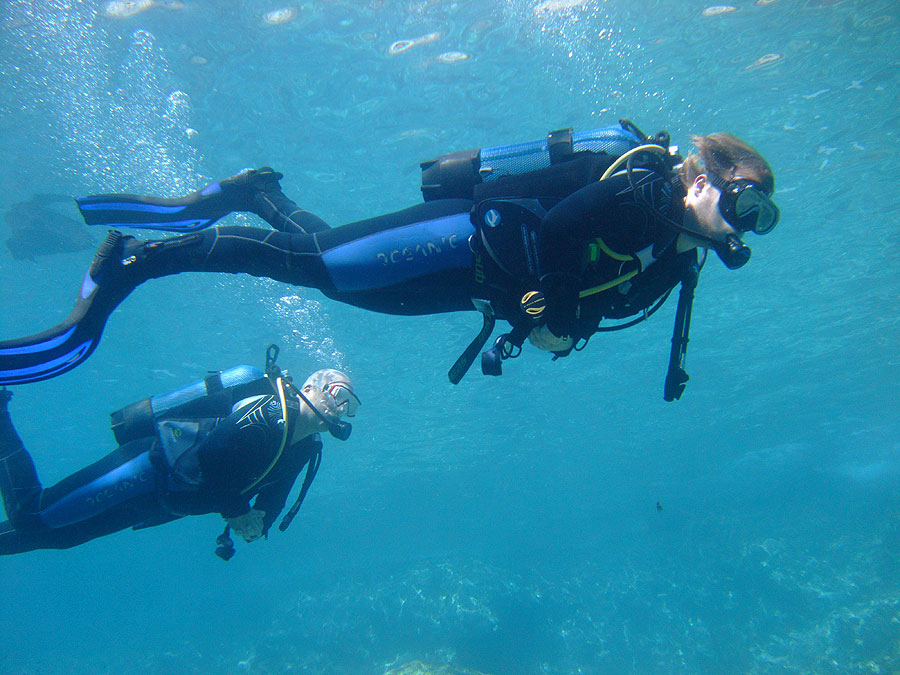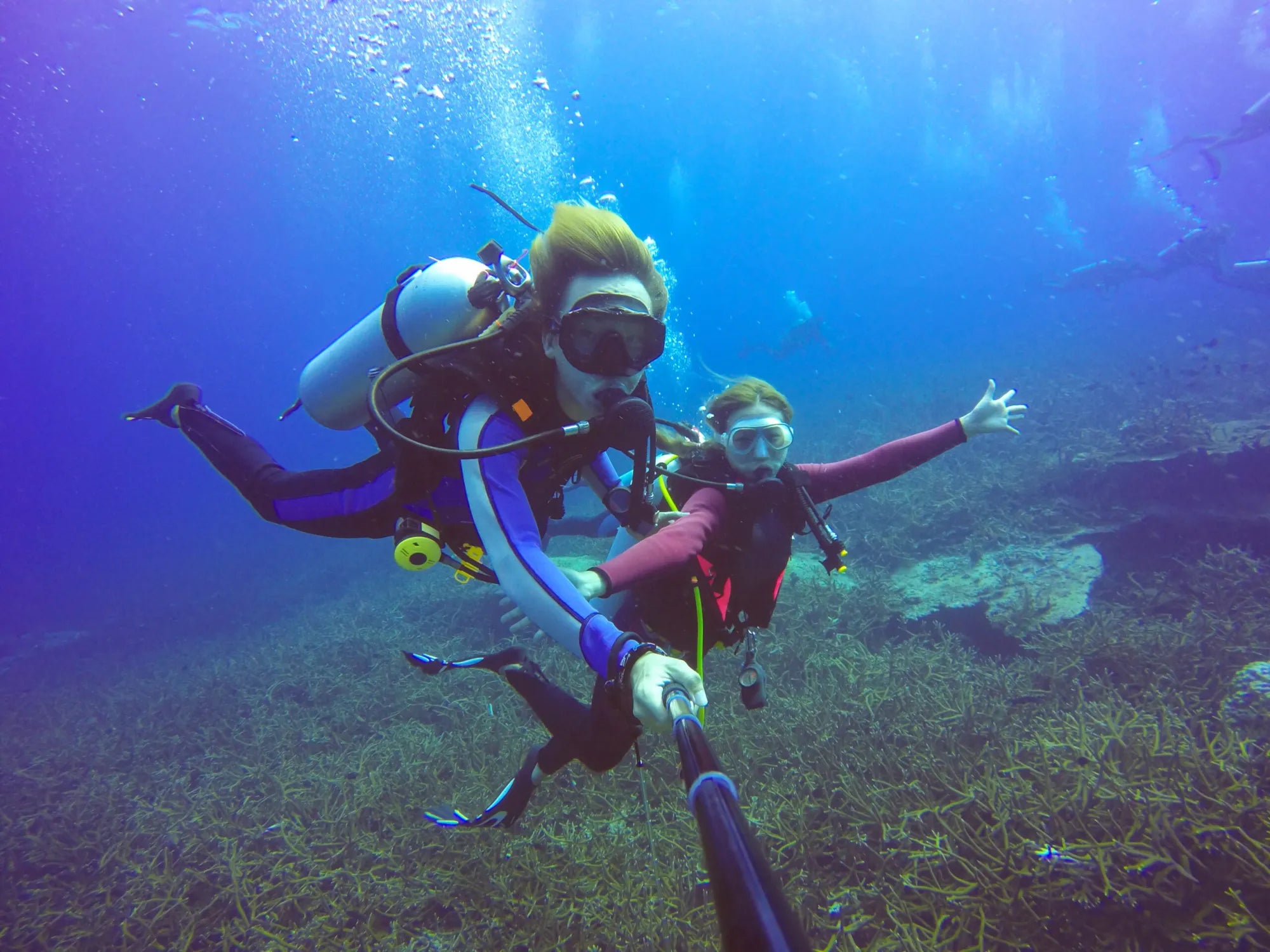Before using your mini scuba dive tank, perform these 5 safety checks: 1) Inspect the tank for dents or rust, as even minor damage can compromise integrity. 2) Verify the pressure gauge reads 200-300 bar (2900-4350 psi) for optimal performance. 3) Check the O-ring seal for cracks or wear to prevent leaks. 4) Ensure the valve opens smoothly without resistance to avoid sudden pressure surges. 5) Confirm the tank’s hydrotest date is within the last 5 years to meet safety standards. Always store tanks upright in a cool, dry place.
Check Tank Condition
Run your fingers along the surface to feel for dents deeper than 1.5mm, which can weaken structural integrity. Look for rust spots larger than a coin (25mm diameter), especially around seams and valves, as corrosion reduces tank lifespan by 30-50%.
Aluminum tanks typically last 10-15 years with proper care, while steel tanks can go 15-20 years if maintained. If your tank has more than 3 deep scratches (over 0.5mm deep), it may need professional inspection. Check for bulges or deformations—a 1% increase in diameter could indicate internal pressure damage.
Hydrostatic testing is required every 5 years—if your tank fails, it’s unsafe to use. A visual inspection (VIP) should be done annually by a certified technician. If stored improperly (e.g., in humidity above 60%), corrosion accelerates by 2-3x. Always store tanks upright in a dry place below 30°C (86°F) to prevent moisture buildup.
Carbon fiber tanks lose 5-10% strength per year after 10 years due to resin degradation. If you see white fibers exposed, replace the tank immediately—internal pressure can cause rupture at 200+ bar (2900 psi).
Quick Checklist:
|
Issue |
Acceptable Limit |
Action Required |
|---|---|---|
|
Dents |
<1.5mm deep |
Sand & polish if shallow |
|
Rust |
<25mm diameter |
Remove with fine grit sandpaper |
|
Scratches |
<0.5mm deep |
Buff with metal polish |
|
Bulges |
None |
Discard tank immediately |
|
Hydrotest age |
<5 years |
Must retest if expired |
Test Pressure Levels
Never assume your ready—pressure directly impacts dive time and safety. A standard 3L aluminum tank at 200 bar (2900 psi) holds 600L of air, giving roughly 30-45 minutes at 10m depth for an average diver. If pressure drops below 150 bar (2175 psi), your bottom time shrinks by 40%. Always check with a calibrated gauge—cheap 50+ models stay within ±2% error.
-
Ideal fill range: 200-300 bar (2900-4350 psi)
-
Below 180 bar (2610 psi), refill before serious diving
-
Above 300 bar (4350 psi), vent excess to avoid valve strain
-
-
Pressure loss rate: A well-sealed tank loses 1-2 bar (14-29 psi) per month
-
If losing >5 bar/month, replace O-rings (15)
-
-
Temperature effects:
-
For every 5°C (9°F) rise, pressure increases ~2 bar (29 psi)
-
A tank filled at 25°C (77°F) to 200 bar drops to ~185 bar in 10°C (50°F) water
-
Overfilled tanks (330+ bar) risk burst discs rupturing—a $30 repair. Underfilled tanks below 150 bar force unsafe ascents: at 15m depth, a 50L/min breathing rate empties a half-filled tank in under 10 minutes. For safety, always start dives with minimum 200 bar.
Testing method:
-
Attach gauge and open valve fully—needle should stabilize in <3 seconds
-
If pressure fluctuates ±5 bar, the valve or gauge is faulty
-
After checking, close valve to 1/4 turn from tight to prevent seat damage
Carbon fiber tanks handle 300 bar routinely, but aluminum tanks degrade faster above 250 bar. Hydrotesting reveals thinning—walls under 4.5mm thick fail inspection. For context, new aluminum tanks have 6-8mm walls, wearing ~0.1mm/year.
Cost of neglect:
-
$120 for emergency hydrotest after overdue inspection
-
$400+ for new tank if corrosion weakens structure
-
Zero visibility ascent risk when air runs out at 18m
Store tanks at stable room temperature—cycling between hot car trunks (50°C/122°F) and cold water accelerates metal fatigue by 3x.

Inspect the Valve
The valve is your mini scuba tank's control center—a faulty one can leak 20L of air per minute or freeze open underwater. Start by checking thread wear: brass valves last 5-7 years, while stainless steel goes 8-10 years. If threads show >0.3mm deformation, replace the valve (80). Spin the knob smoothly—resistance over 2kg of force indicates grit or corrosion inside.
Critical valve specs:
|
Component |
Tolerance |
Replacement Cost |
|---|---|---|
|
O-ring (stem seal) |
<0.1mm groove wear |
12 |
|
Burst disc |
Ruptures at 330±5 bar |
25 |
|
Valve seat |
Must seal with <1 bar/min leak |
60 |
|
Knob grip |
Minimum 8mm depth |
30 |
-
Leak test: Submerge the opened valve in water—>1 bubble every 10 seconds means trouble
-
Flow rate: At 200 bar, a fully opened valve should deliver 60L/min without whistling
-
Service intervals:
-
Lubricate every 6 months with silicone grease ($10/tube)
-
Replace O-rings annually (70% failure rate after 18 months)
-
Full rebuild every 3 years (~$50 labor)
-
Common failures:
-
Stuck valves from saltwater corrosion (happens 3x faster in ocean use)
-
Micro-leaks at the seat causing 5-10 bar pressure loss overnight
-
Burst disc corrosion reducing rupture threshold by 50 bar
For Yoke valves, check the clamp surface for scratches deeper than 0.2mm—they prevent proper seal with regulators.
Pro tip: After diving in water below 10°C (50°F), open/close the valve 3-4 times to prevent ice jams. Store tanks with valves 1/4 turn open to avoid seat compression. Remember: 90% of tank failures start at the valve.
Verify O-Ring Seal
That little rubber ring is your first line of defense—a failed O-ring can drain a full tank in under 15 minutes. Standard nitrile O-rings cost 2 each, but their failure causes 85% of scuba tank leaks. Check for flat spots over 0.2mm deep or cracks longer than 1mm—both will leak at 5-10 bar/minute. The main tank valve O-ring (BS-117 size) should be 5.3mm thick when new, wearing down 0.1mm per year with monthly use.
For regulator connections, measure O-ring stretch—more than 15% diameter increase means replacement is overdue. In saltwater, O-rings degrade 3x faster; always rinse with fresh water within 2 hours of diving. Silicone grease extends life by 40%, but over-application attracts dirt—0.1g per O-ring is ideal. Storage matters: O-rings last 5 years in cool, dark places but just 18 months in direct sunlight.
Pressure testing reveals hidden issues: at 200 bar, a good seal shows <1 bar pressure drop in 10 minutes. If your tank loses >3 bar overnight, inspect all O-rings with a 10x magnifier—look for micro-tears under 0.05mm wide. For high-pressure (300 bar) tanks, use Viton O-rings (5 each) that withstand 50°C to 200°C temperatures without hardening.
Dive shops report 60% of "tank leaks" are just worn O-rings. Keep spares in three sizes: BS-117 (valve), 2-011 (regulator first stage), and 2-013 (SPG connection). When installing, never stretch more than 25%—use an O-ring pick ($8) instead of sharp tools. A proper seal should allow 1/8 turn past finger-tight on regulator connections—over-tightening deforms the ring, causing premature failure in 20-30 dives.
For cold water diving below 10°C (50°F), switch to EPDM O-rings (4) that stay flexible at low temperatures.
Confirm Hydrotest Date
Aluminum tanks require hydrotesting every 5 years, while steel tanks in harsh conditions may need it every 3 years. The test costs 50, but skipping it risks a $400 tank failure—or worse.
-
Test failure rates:
-
12% of aluminum tanks fail first hydro at 10 years old
-
8% of steel tanks fail due to liner corrosion
-
90% of failures occur in tanks stored with <50 bar pressure (allows internal moisture)
-
-
Visual inspection (VIP) required annually—about 20 at dive shops
-
Checks for >10% wall thinning or corrosion pits deeper than 1mm
-
Hydrotest process:
-
Water jacket method measures 0.1% permanent expansion under 1.67x working pressure (e.g., 500 bar test for a 300 bar tank)
-
Ultrasonic testing verifies minimum wall thickness (4.5mm for aluminum, 3.2mm for steel)
-
Eddy current scan detects cracks as small as 0.05mm deep
Tanks lose 0.5% strength per year post-manufacture—a 15-year-old tank at 300 bar has effectively 285 bar safe capacity. Composite tanks (carbon fiber) need X-ray scans every 2 years (200) to check for resin cracks. Never use a tank >6 months past its hydro date—dive shops will refuse fills, and insurance voids coverage.
Storage affects testing:
-
Tanks kept full (200+ bar) corrode 5x slower than empty ones
-
Saltwater exposure doubles corrosion rates
-
Humidity >60% requires 3x more frequent inspections
Cost timeline:
-
Year 1: $20 VIP
-
Year 5: 20 VIP
-
Year 10: 100 ultrasonic test (for older tanks)
-
Year 15: Retire aluminum tanks (80% do at this age)
Pro tip: After hydro, check the test report for "elastic expansion" values—a change >5% from last test signals metal fatigue.





Leave a comment
All comments are moderated before being published.
This site is protected by hCaptcha and the hCaptcha Privacy Policy and Terms of Service apply.